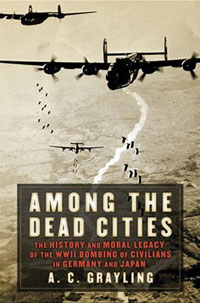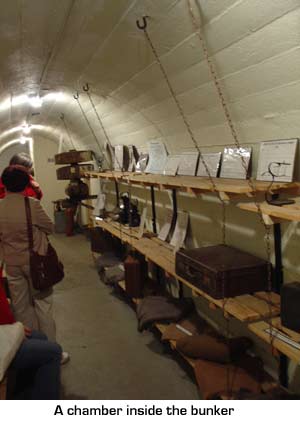 Inferno: The Devastation of Hamburg, 1943, by Keith Lowe
Inferno: The Devastation of Hamburg, 1943, by Keith Lowe
Keith Lowe’s Inferno: The Devastation of Hamburg, 1943, recounts in great detail Operation Gomorrah, the Allied bombing of Hamburg, Germany 65 years ago.
Between July 24 and August 3, 1943, 10 thousand tons of high explosives and incendiaries rained down upon the people of Hamburg.
Lowe shows great empathy for the people of Hamburg: its 45,000 citizens who suffered horrific deaths in the resulting firestorm; for the survivors, often injured and homeless; and the one million evacuees from the devastated city.
His empathy also extends to the Allied aircrews?once considered heroes, but more recently characterized as war criminals?that bombed the unfortunate city.
Even as Lowe questions the value of targeting civilian populations, he makes it clear that Royal Air Force crews had been led to believe that they were in fact attacking strategic targets. (The USAAF did not attack civilian targets in Germany, although they did in Japan.)
This type of warfare, however, was not unprecedented. The British had learned from the German bombing of London and other British cities that the resulting fires created more damage than explosives alone. Based on this experience, the RAF used a combination of high explosive bombs and incendiaries. Rather than simply flatten buildings, the explosives were used to blow out doors and windows, providing air for the fires, and spreading the fire as efficiently as possible.
The explosives also helped the incendiaries to penetrate buildings, and kept fire crews and their equipment away from the scene of devastation, allowing the fires to burn to maximum effect.
What Hamburg experienced as a result was a firestorm; hurricane-force winds and massive fires producing incredible heat. In some areas of the city, the temperature may have been as high as 1,400 degrees Celsius.
 Glass melted and bricks turned to ash. Wind speeds may have reached as much as 170 miles per hour. The conflagration consumed available oxygen, so that many of its victims died of carbon monoxide poisoning or smoke inhalation.
Glass melted and bricks turned to ash. Wind speeds may have reached as much as 170 miles per hour. The conflagration consumed available oxygen, so that many of its victims died of carbon monoxide poisoning or smoke inhalation.
Lowe quantitates the destruction: the loss of 40,385 residential buildings, or about 275,000 apartments; ?24 hospitals, 277 schools, 58 churches, 77 cultural centres (cinemas, theatres, and opera houses), and one zoo?; 45,000 dead; 37,439 injured; one million people evacuated from the shattered city.
Lowe compares this level of destruction to that which was soon possible with atomic bombs. In fact, he notes, more people died in Operation Gomorrah than died in the immediate aftermath of the bombing of Nagasaki with a nuclear bomb.
?The purpose of this book, therefore, has been to try to give an impression of what bombing means to those unlucky enough to be caught up in it? writes Lowe. To that end, he does an admirable job.
One cannot be unaffected by the scenes that Lowe presents to the reader. The terror experienced by Hamburg’s citizens, and the harrowing experiences of the bomber crews, are vividly portrayed by this skilled author.
Trying to assess the efficacy of the British strategy, however, is the book’s greatest weakness. One feels that Lowe is struggling to find some value in this devastating and costly campaign to destroy German morale.
No doubt it was true that ?. . . the effect of Operation Gomorrah on ordinary Germans?not only survivors of Hamburg, but people across the country?was phenomenal.?
The actual effect of the bombing on German morale, nevertheless, seems to have had a rather questionable effect on the outcome of the war.
Lowe quotes one Hamburg resident about the effects of the bombing: ?. . . if anything I think it strengthened people’s resolve and gave them more backbone.?
This should perhaps not have been surprising, as the German Blitz on London and other British cities had hardly forced the British to surrender. Why should the bombing of German cities have had a different result? Perhaps the British are not the only people capable of maintaining a ?stiff upper lip.?
Clearly, however, Lowe does have problems with Bomber Command’s strategy. ?The only thing that saves this policy [of bombing civilians] from the charge of total immorality was that it was born of the best intentions,? writes Lowe.
Or perhaps, reflecting, as it did, the knowledge gained from German attacks upon British cities, might the British bombing of German civilians simply have been motivated by the less honourable, though certainly understandable, desire for revenge?
Nevertheless, Inferno is a powerful account of human tragedy on a massive scale. Drawing upon extensive documentation and eyewitness accounts, this important book is detailed and well researched. Lowe presents a well-balanced analysis of his subject, approaching this controversial topic with great insight and compassion.
Inferno: The Devastation of Hamburg, 1943 is published by Viking Books (2007) ISBN: 978-0670915576


